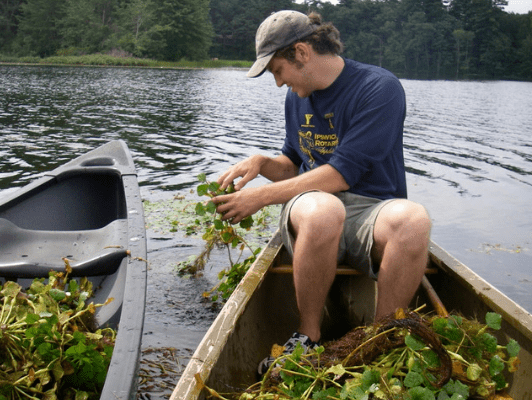WEED WATCHERS
Early detection of invasive aquatic plants is critical to protecting native plants, aquatic habitat and recreation.

WEED WATCHERS PROGRAM
Many non-native aquatic plant species have been brought here from other parts of the country and the world. Some of these species are considered “invasive” because they have few or no natural predators or competitors and can fill a shallow water body within a few years. Once established, invasive aquatic plants are almost impossible to eradicate and can be carried to other water bodies on boats and waterfowl. Aquatic invasive plants may out compete native plants and interfere with recreation. Water becomes stagnant under dense plant canopies and suppresses oxygen circulation. Invasive aquatic plants often create single species stands, reducing biodiversity and affecting habitat values.
MONITORING SCHEDULE AND LOCATIONS
Monitoring and early detection for invasive aquatic plants can preserve
native plant communities protect fish populations, maintain and maintain recreational use of a water body.
Any accessible, navigable body of water can be surveyed by collecting and identifying a specimen. Use the iNaturalist App or Guide to Invasive Species in Massachusetts to help identify specimens. Surveys are best done during the paddling season (April-October). Rivers and streams can be surveyed during any paddling trip. To survey lakes and ponds, navigate the perimeter in a zig-zag pattern out to deeper water. Observe floating mats and submerged vegetation. We recommend using iNaturalist to upload and aid in identifying specimens. The app will record the location.
Interested in volunteering for the River? Fill out our Volunteer Inquiry Form.